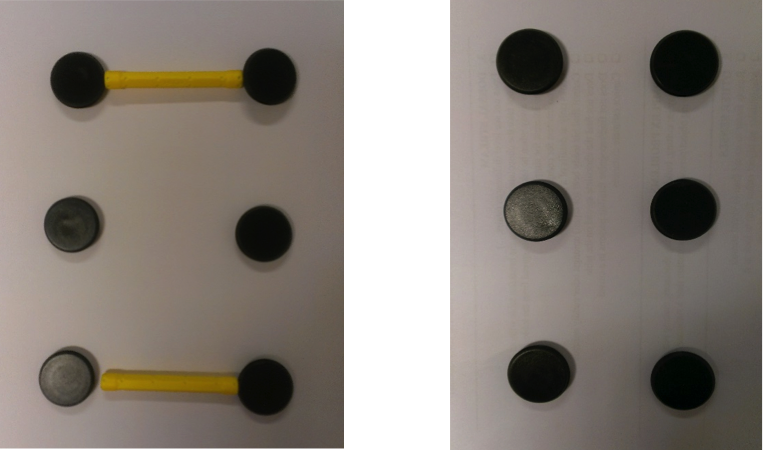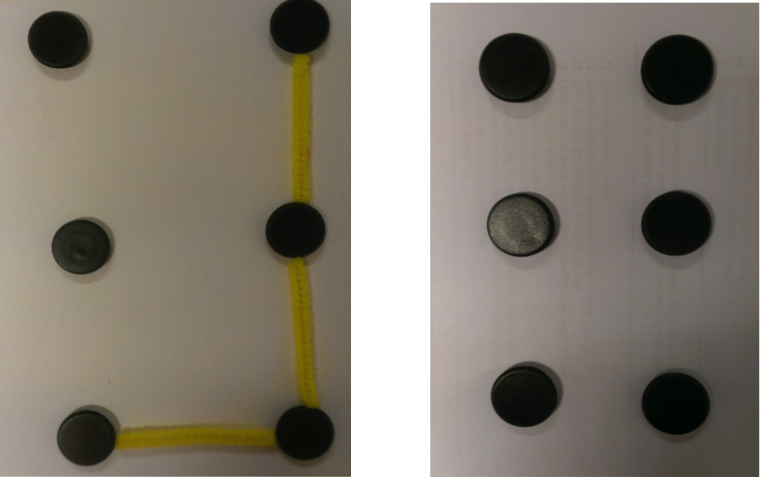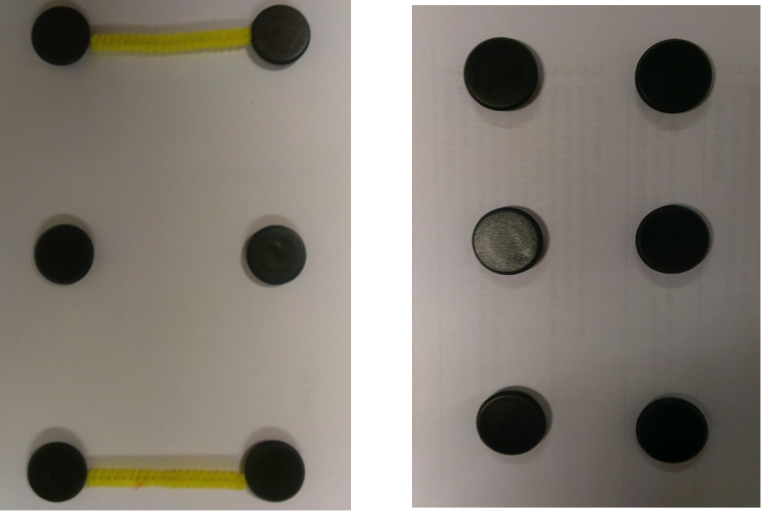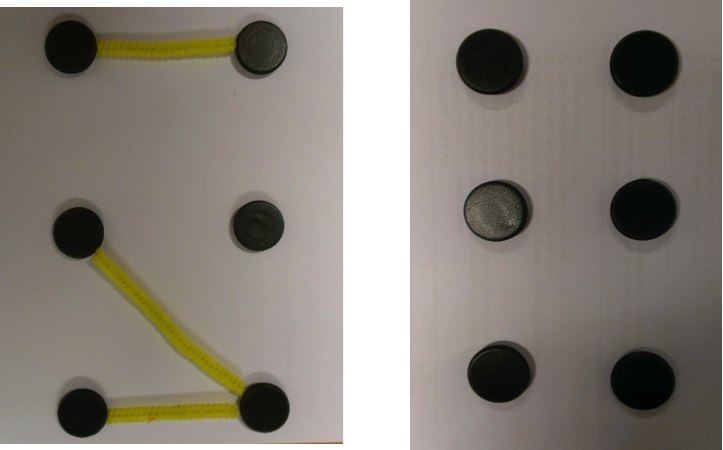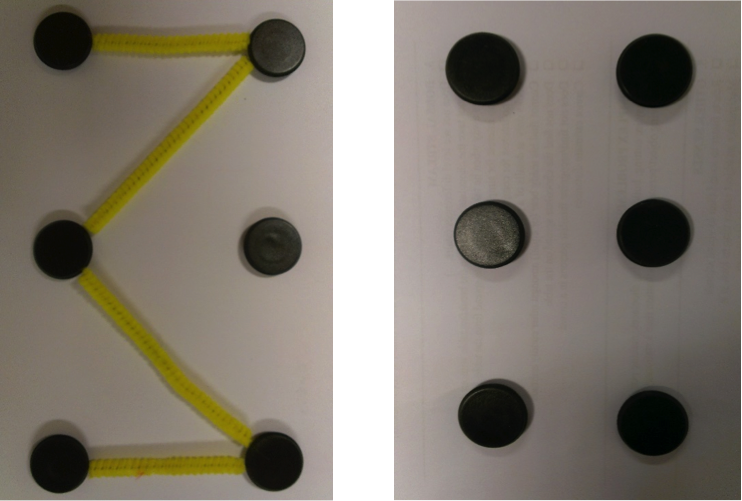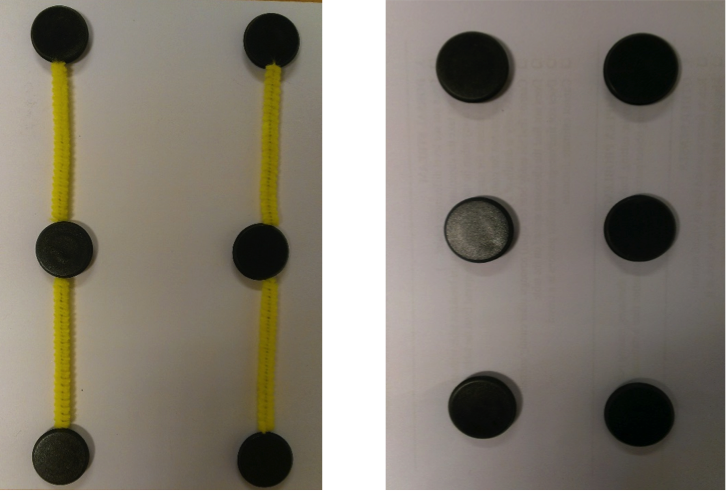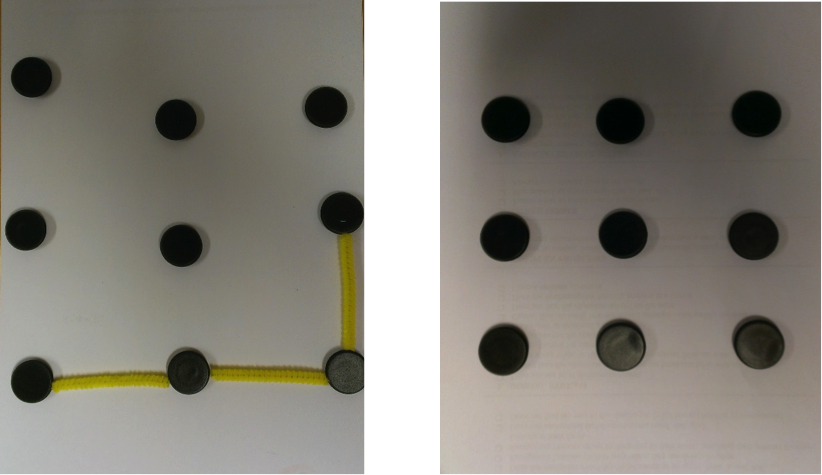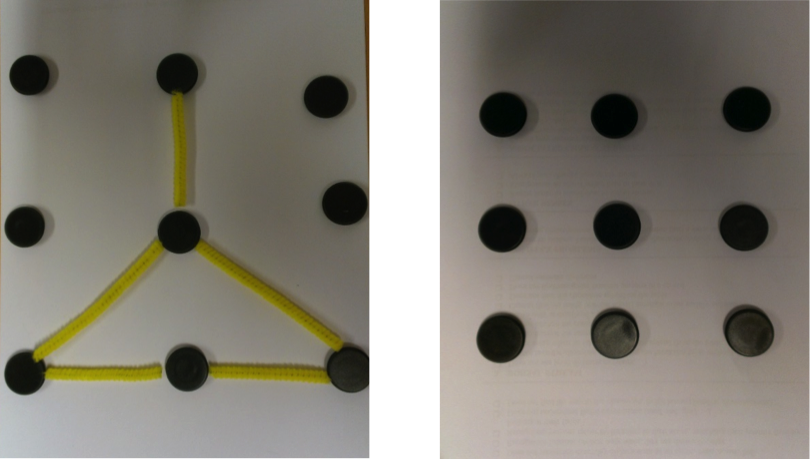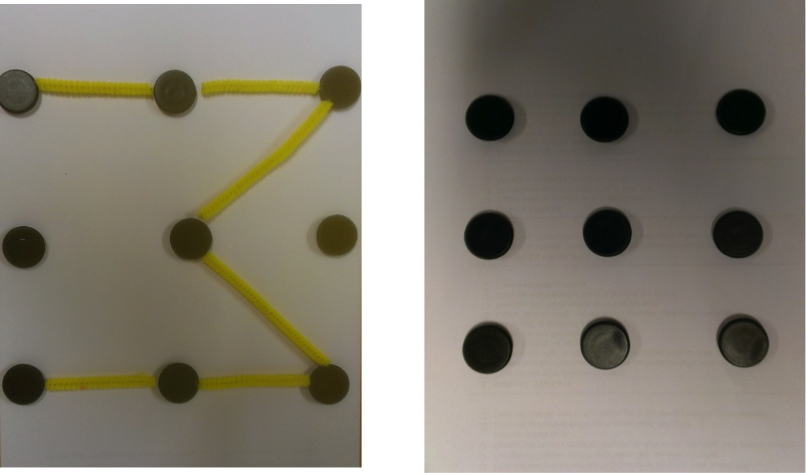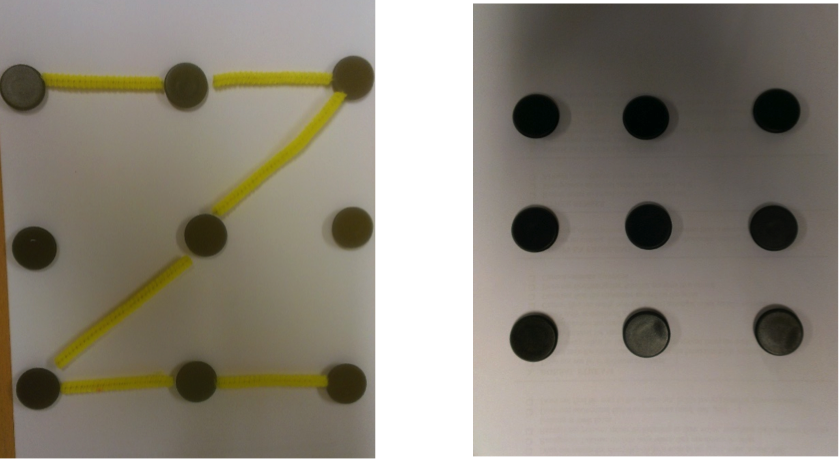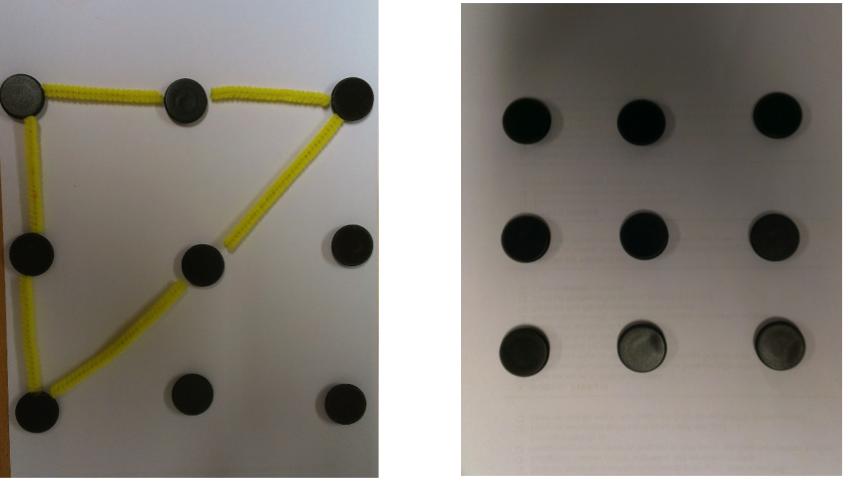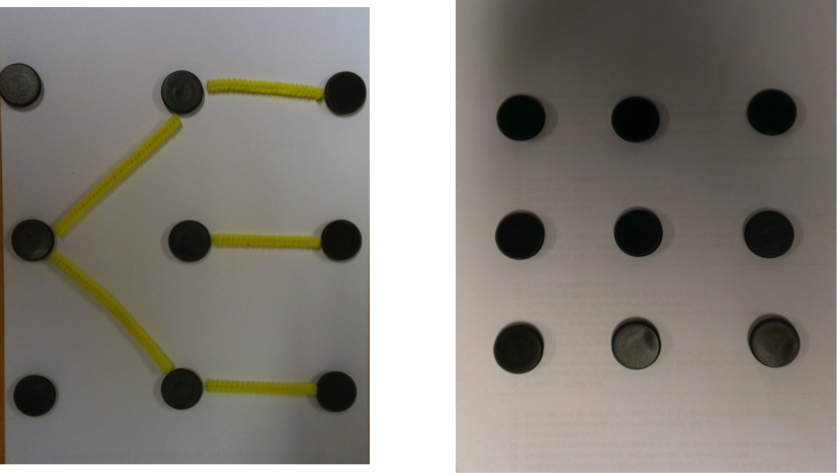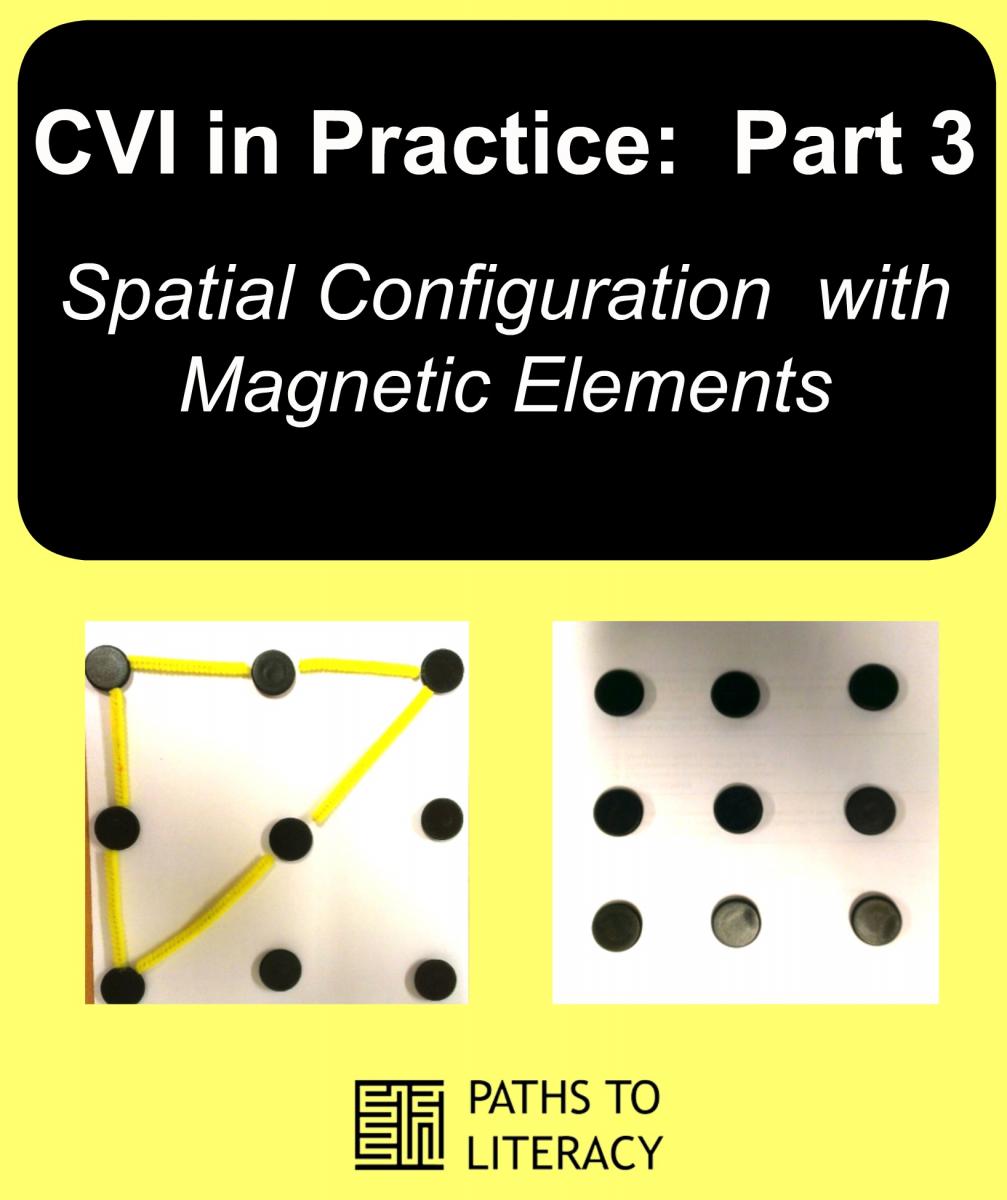CVI in Practice: Spatial Configuration with Magnetic Elements
Submitted by Roxana Cziker on Oct 24, 2016
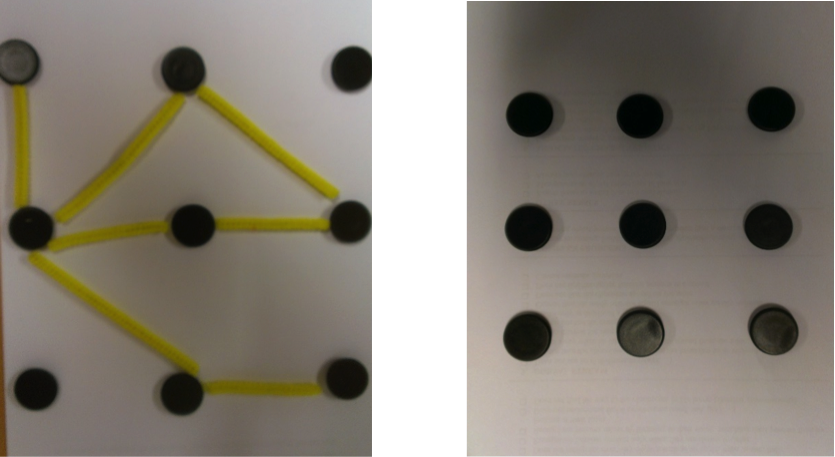
This is the third post in a series of five on Cerebral Visual Impairment (CVI) in Practice: Strategies to Develop Visual-Spatial Skills Related to the Process of Writing Letters by Dr. Roxana Elena Cziker.
This is a practical strategy for students with CVI to learn visual-spatial relations and written letters.
Stage 1: Activity with Concrete Elements
(enactive stage of learning theory of Jerome Bruner)
- First the child should see the concrete model, created by the teacher or therapist in front of the child. In this way she or he will be able to figure out the relationship established between the component elements of the pattern.(see the examples below).
- Explain and teach the child where to start by looking at the model you have created. If necessary, take apart the elements, and then assemble them again in order to make the child aware.
- Start with just simple magnetic elements making only two lines between the elements. (See the example in Figure 1.)
- Verbalize while you are making the model: “Now I will put the first stick on the left side, then I will add a small ball in order to connect the sticks and then I will put the second stick." Use the models provided below.
- As much as possible, use spatial concepts, such as left, right, up, down, behind, in front, next to, first, and second both verbally and practically.
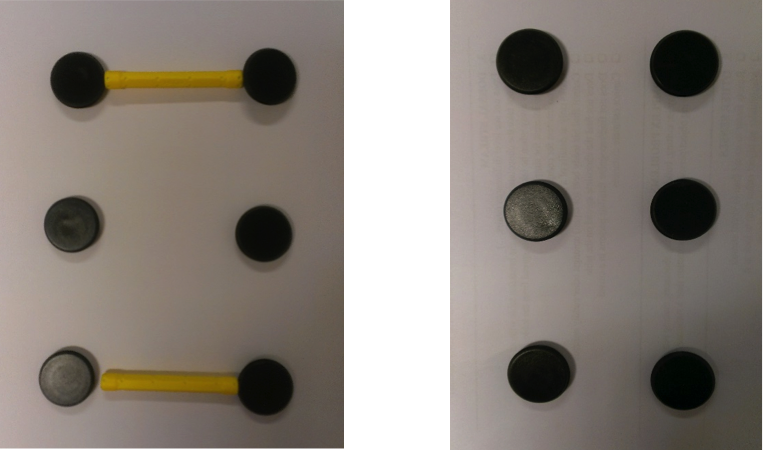
2. Stage 2 – Activities with Images
(iconic stage of learning)
- After you are sure that the child has understood the strategy, go to the next step in presenting the child with the picture of the spatial configuration. Ask the child to make the same model as in the picture. (See the example in Figure 2.)
- Analyze the spatial configuration in the picture together with the child and begin each time from the left and top side of the page in order to create the proper strategy of visual searching.
- Begin first with two or three magnetic elements in the picture, as in the model in Figure 1. Then make the spatial configuration design more complicated, as in the other examples provided.
- The model created by the child should be placed beside the picture, not over the picture, in order to make the child aware of the composition of the elements in the spatial configuration.
